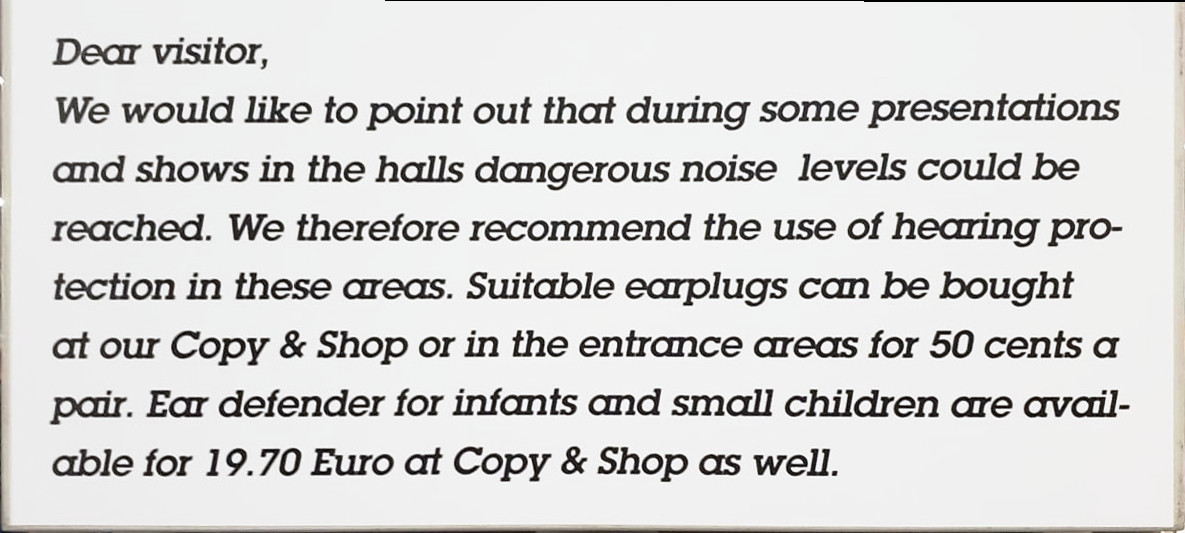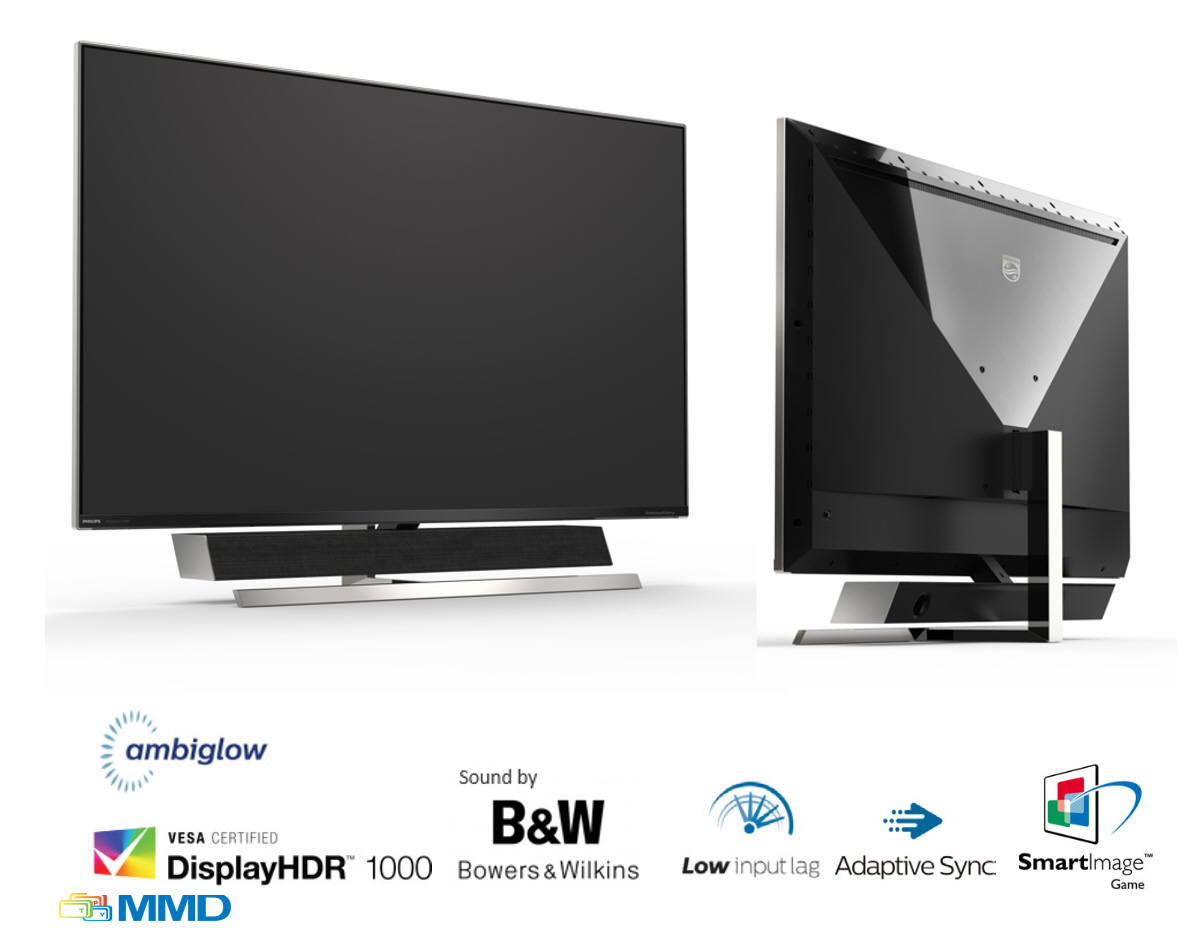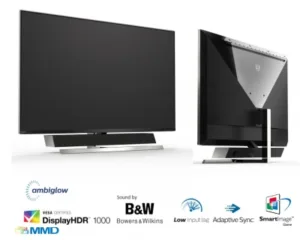The life of a display industry observer and analyst can involve some slightly surprising interests and events. This year, for the first time, I attended the annual gaming jamboree that is Gamescom in Cologne – an event that was expected to attract 430,000 dedicated gamers.

I was grateful that I could attend on the press and trade day – although even on that day, there were signs from the organiser warning of ‘dangerous’ levels of noise and advising where ear plugs and defenders could be purchased!

Gaming is by far the most interesting segment of the consumer monitor market from a growth point of view, and it has gradually attracted more and more participants. This year, Gigabyte was promoting its monitors in Europe under the Aureos sub-brand, having announced its move into displays at CES earlier this year.
Classic Branding Strategies
The market follows some classic models, with those that regard themselves as being ‘serious’ gamers wanting the products with lots of special features and highly specialised specifications – and to exploit this, the monitor makers tend to develop dedicated sub-brands such as Agon (AOC), ‘Republic of Gamers’ (Asus), Alienware (Dell) and Omen (HP). However there is also a tier of players that are also price conscious and want a monitor that may be mainly used for general PC applications, with occasional gaming use. These tend to be sold under the main brand, so at Gamescom, AOC had Agon and AOC, Dell had both Alienware and ‘Dell Gaming’ products.
The monitors are divided by specifications and by features. Of all of the ‘tick boxes’, the key one is frame rate with 240Hz refresh the current ‘top of the range’ specification. Now, at the moment, only TN monitors with FullHD resolution can achieve this, but over the next couple of years, this higher resolutions will gradually migrate to this kind of framerate, first in QuadHD (1440 line) resolutions and later in UltraHD. Because speed is ‘everything’, the eSports market – where the gamers are professionals – is dominated by 240Hz 24″ FullHD monitors. Gamers, we were told, really don’t care about image quality or resolution, but really care about speed and performance.
BenQ has a technology that it calls ‘DYAC’ which improves the motion performance and we got a demo of the effect on two monitors, one with the feature on and one with it off. The detail was certainly more visible on fast moving objects with the feature on. I suspect that the technology is based on backlight blinking, but staff on the booth could (or would) not provide the inside story on how it works. Later research confirmed that the technique does, indeed, use backlight control to improve motion performance. Staff told us that at a recent professional tournament sponsored by a rival monitor maker, the professional players insisted on their own BenQ monitors, which were then given stickers of the sponsoring brand. Praise indeed!
It’s not just speed of display that is important – the ability to adjust or modify monitor settings quickly can also make a difference. BenQ uses a ‘puck’ with different options to allow quick switching, but Gigabyte had an interesting alternative. It has a USB hub in the monitor that can intercept keyboard commands before they go to the host PC and the whole sophisticated OSD is run directly with the keyboard and mouse. The monitor can even do its own BIOS updates to add new features and optimisations. At the moment, BIOS updates are coming out every couple of months.
Philips Optimises for Consoles
One of the other meetings that I had was with Philips which was highlighting its monitors for console gaming – previously available in 24″, 32″ and 43″. These are optimised HDMI monitors that can stand in as a TV when connected to an STB, a DVD or Blu-ray player, a console or a streaming stick. For years, I have suggested that there should be a market for such a device. I don’t think I have used the tuner in any of the TVs that I have had for at least 12 or more years. I have a Sky box, a Blu-ray player, a Playstation and a Roku stick connected. With these there is no need for the tuner or the ‘smarts’ in the TV (and they weren’t very smart even five years ago when I bought it!). Philips has bought into this concept but it has found that because people see the monitor as replacing a TV, it needs to be bigger than 43″ – so there is a 55″ version on the way. That will be an impressive living room display, when it arrives in Q1 2020- not least for its very low input lag – just a few ms.
Philips intends to extend the range as HDMI inputs are upgraded to allow higher frame rates, but the company will have also have access to panels that can support this high level of gaming performance.

However, there has been a barrier to this kind of product and the problem is the TV sales channels. TV stores just want to sell TVs – they have to explain what the Philips monitor does and they simply can’t do that, so they won’t stock the products. They are concerned that consumers will return too many units. (I can sympathise – I’m an Airbnb landlord in my private life and provide guests with hundreds of HD satellite channels including premium sports channels – but some guests find it all too much and just want ‘proper TV’ on the terrestrial model!). On the other hand, the company expects to be able to sell the 55″ for around €1,300, where it believes that TVs that have a similar specification will cost >€2,000.
The design is intended to deliver high quality audio as well as a good image, with speakers being supplied and tuned by UK speaker specialist, B&W.(BR)

